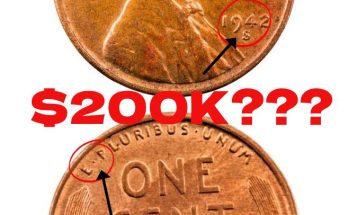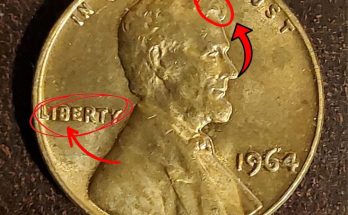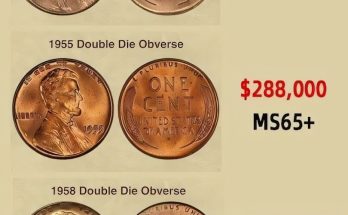The image’s headline is bold and electrifying: a 1974-D Lincoln Penny, a coin you might find in a jar of spare change, is “Worth MILLIONS!” This captivating claim points to one of the most intriguing and mysterious chapters in modern American numismatic history. While the vast majority of 1974-D pennies are worth just a few cents, there is one, and only one, that holds a value so high it sparked a legal battle with the U.S. government. Its story is a fascinating blend of historical circumstance, minting error, and the ultimate rarity.
The year 1974 was a time of economic uncertainty in the United States, marked by high inflation. One of the many challenges faced by the U.S. Mint was the rising price of copper. By 1973, the cost to produce a copper-heavy penny was nearly equal to its face value of one cent, eliminating the profit the government made from seigniorage. To address this issue, the U.S. Mint began experimenting with a new, cheaper metal composition for the cent: aluminum.
The plan was to produce a small number of aluminum cents to be shown to members of Congress for approval before a full-scale release. The coins were struck, and some were distributed for evaluation. The new aluminum cents were distinctly different from their copper counterparts. They were significantly lighter, weighing only about one-third as much, and had a silvery-white color. The experiment, however, was a failure. The aluminum pennies were a concern for the vending machine industry, and pediatricians raised alarms that the coins might be difficult to detect on X-rays if swallowed by a child. As the price of copper stabilized, the Mint decided to scrap the project, and a mass recall was initiated. The vast majority of the approximately 1.6 million aluminum cents were collected and destroyed.
However, a few of these experimental coins were not returned and disappeared into private hands, creating a numismatic legend. The most famous of these is the 1974-D aluminum cent. The “D” mint mark indicates the coin was struck at the Denver Mint. While a number of aluminum trial pieces were produced in Philadelphia, the existence of a Denver-minted version was long considered a rumor. The U.S. Mint claimed no such coins were ever officially authorized or struck in Denver.
That all changed in 2013, when a San Diego resident named Randy Lawrence came forward with a 1974-D aluminum cent. He claimed the coin had been a retirement gift to his father, Harry Edmond Lawrence, a former Deputy Superintendent of the Denver Mint. The coin, which had been stored in a plastic sandwich bag, was authenticated by the Professional Coin Grading Service (PCGS), one of the industry’s most respected grading organizations. Experts valued the unique coin at a minimum of $250,000, with some estimates soaring as high as $2 million or more.
The discovery sent shockwaves through the numismatic community. However, the story took a dramatic turn when the U.S. government intervened. It filed a lawsuit against Lawrence and his business partner, asserting that because the 1974-D aluminum cent was an unauthorized experimental coin that never left the Mint’s official possession, it was still government property. The government’s claim was ultimately successful, and after a legal battle, Lawrence agreed to surrender the coin. The unique 1974-D aluminum cent was officially returned to the U.S. Mint, where it remains as a piece of American history—a fascinating coin that is not, and will likely never be, available for private ownership.
This incredible saga highlights a crucial point: while the photo’s claim of a “1974 D Lincoln Penny Worth MILLIONS” is sensationalized, it is based on a grain of truth. However, the standard 1974-D cent, made of copper and zinc, is a common circulation coin. The Denver Mint produced billions of these in 1974, and their value is typically just face value, with uncirculated examples worth only a few dollars. The only way a 1974-D penny could be worth millions is if it’s the one that made legal history. So, if you’re ever lucky enough to find a 1974-D cent, the first thing to do is a simple check: if it feels noticeably lighter and is silver-colored, you might just be holding a piece of a truly unique and priceless legend.



